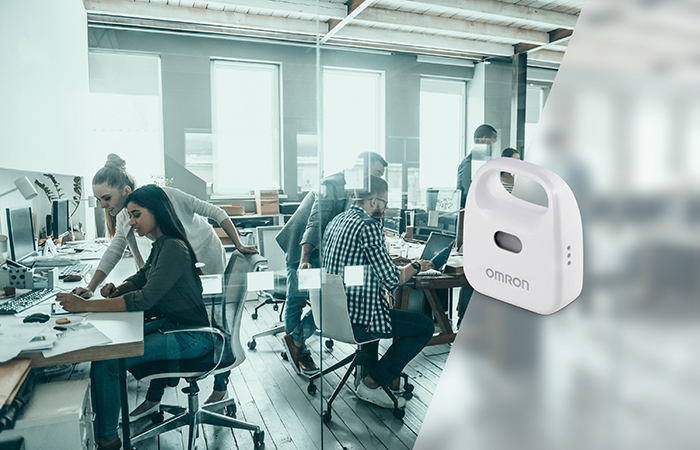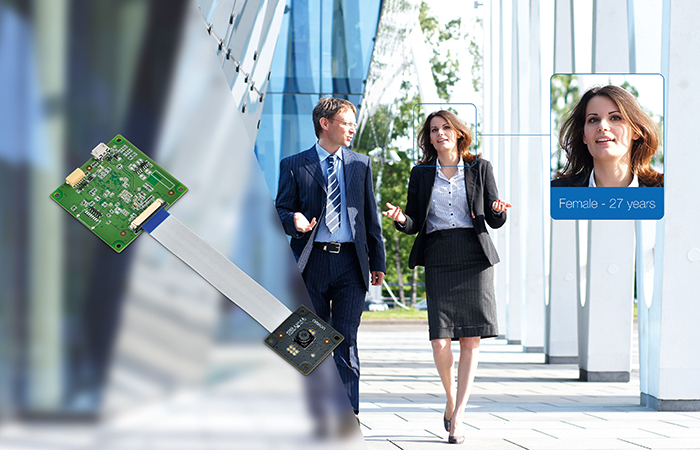A world of opportunities
The IoT is opening up a world of opportunities for unattended facilities. A range of IoT-ready sensors allow for designers to create remote automated response systems. Gabriele Fulco, European Product Marketing Manager, Omron Electronics Components Europe, explains.
The IoT is now here and every day new unattended facilities are being opened all around the world, improving operating economics, reducing staff costs and generally benefitting the environment. However, too often while sensors are installed that monitor the performance of the facility directly, insufficient thought is given to monitoring the many secondary factors that can affect the performance of the system.
This is the real challenge for designers who need to create a system that can be fully automated and connected and relied upon to operate safely in all circumstances, despite being in isolated and rough terrain locations or at a site that receives minimal attention. The IoT system is fully capable of executing an automated function but is often unaware of the external environment which could well play a role in affecting performance, especially safety.
IoT is opening up a world of opportunities but it is also creating additional responsibilities for the designer who must design-in sensors that satisfy the needs of the facility. Take for example, a reservoir, high in the mountains, that has an automated system which monitors the level of the water.
If it had a human operator on-site, they would be aware that the temperature was beginning to soar, or that a forest fire had broken out in a neighbouring field. They would also be aware of potentially catastrophic events affecting safety, like an earthquake that could impact the structure of the dam. IoT is now allowing these environmental factors to be considered alongside the initial automated task of water measurement and is something that a design engineer must think about beyond the immediate function of the system.
Environmental sensor
To remove the need for a human operative at the reservoir, the IoT system would need to have several connected sensors in place that monitor temperature, humidity, pressure, etc. Each sensor would have to be designed-in individually - no small job for the designer. A multi-functional environmental sensor, such as Omron’s 2JCIE-BL01, can make it easier for design engineers to have a fully integrated sensor that covers a multitude of environmental factors in addition to those mentioned here - UVI, light, noise and acceleration.
Data from the module can be downloaded over Bluetooth (BTLE) allowing designers to easily access recorded data. The module has very low power consumption, in fact it can be operated by just a regular 3VDC lithium battery for approximately six months depending on the measurement interval. Certified for all required regulations/directives in the EU, US and Japan, the 2JCIE is FCC approved and CE marked. It is sized at just 46x39x15mm and weighs 16g, allowing it to be easily incorporated into any system. The BTLE link has a range of approximately ten metre and the sensor has an operating temperature between -10 and 60°C.
In the example of the reservoir, a rise in temperature could be detected by the environmental sensor and an alert issued and/or an automated response implemented such as allowing additional water into the reservoir to compensate for increased evaporation.
Seismic sensor
In many areas of the world, as well as the environmental factors mentioned here, you may also need to worry about the threat of an earthquake. They are extremely common around the world with over 50 each day on average. That’s about 20,000 a year and if you’re not prepared it could cost thousands in damages and lost sales. It’s a particular issue for unmanned IoT systems.
An attended system with a human operator can normally be shut down safely in the case of an emergency, but remote systems are left vulnerable if the issue isn’t detected. By designing in a smart seismic sensor, such as Omron’s D7S, the risk of secondary damage after an earthquake can be minimised by safely stopping any hazardous devices and halting production lines as necessary. Furthermore, it can also help determine damage by mapping seismic intensity and providing risk of building collapse information.
Above: IoT isn’t just helping to automate systems that are unmanned, it’s also allowing design engieers to build-in sensors to intelligently be aware of the people in any given environment
In the case of the D7S sensor, it has a worldwide patented algorithm technology that gives high precision measurement of Spectral Intensity (SI), allowing the sensor to reject impulse vibration noise and only respond to genuine seismic activity. If your plant happens to be located next to a train line, the sensor uses its 3-axis accelerometer and Omron’s SI value calculation algorithms to distinguish between seismic activity and other movement.
Dust sensor
Air pollution monitoring in both home and work environments is becoming more crucial as building managers and authorities alike look to control vehicle emissions, cigarette and other smoke. An increase in particles in the atmosphere can also indicate a higher pollution risk. Through IoT, the dust sensor can automatically send an alert that can activate air conditioning units to counterbalance the influx of pollutants and secure the environment.
Omron’s Dust Sensor (which measures 50x45x20mm) has been developed to detect particles as small as 0.5 microns in the atmosphere and features a high air throughput of around six times that of established alternatives. The result is an improved sensitivity of response to changes in the environment.
Facial recognition sensor
Finally, IoT isn’t just helping to automate systems that are unmanned, it’s also allowing design engineers to build-in sensors to intelligently be aware of the people in any given environment. For example, a sensor could be used to detect a human presence amongst animals and then also use facial recognition to determine whether this person is authorised to be in the building. The latter having many security applications from access to buildings, computers, phones etc and also restricting access for different people, with different clearance levels.
Facial recognition and many other gesture related recognition can easily be added to a system by a designer without the need to understand the algorithms or the optical design. Using a product like the Omron HVC-P2 B5T sensor a designer can integrate ten key image sensing functions into their system - detection of a human face, hand or body, face recognition, gender detection, estimation of age, mood, facial pose, gaze and blink. In each case the module returns a value together with a degree of certainty, allowing the programmer to configure the response appropriately for each individual application. This can be easily integrated into an established system or implemented as part of a new design. All the integrator needs to do is read the data output and programme the system to react appropriately.

Above: A multi-functional environmental sensor, such as Omron’s 2JCIE-BL01, can make it easier for design engineers to have a fully integrated sensor that covers a multitude of environmental factors
The Omron HVC module is specifically aimed at applications like digital signage or vending machines to customise advertisements based on the people stood in front of the display, or in building automation to detect and count people or differentiate between young and old, male and female and even give a mood estimation (based on one of five expressions). Although the algorithms required to implement these functions are complex and processor intensive, they are handled entirely within the module without making any demand on the host system. This frees the developer from having to devote time to building and testing algorithms - a complex and time intensive task.
Conclusion
IoT is giving engineers a wealth of opportunity at their fingertips to design systems that are truly autonomous. It’s becoming easier for both direct and indirect environmental factors of a facility to be monitored through clever sensor technology where thresholds can be set and automated actions determined via cloud-based solutions.
Modules, such as the HVC and the environmental sensor, can also save design engineers time and effort allowing them to build-in one sensor that can cover a multitude of factors.
For unmanned facilities, automation is a key factor however, for manned facilities it is just as important with customisation a key area. For example, imagine you’re driving to work and your car alerts your workstation that you’re five minutes away and your unique seat settings are adjusted and your PC booted up. Perhaps even your coffee of choice is being brewed by the coffee machine timed to be ready just as you walk in. IoT systems truly are opening up a world of automation to make both our working and home lives more streamlined.











